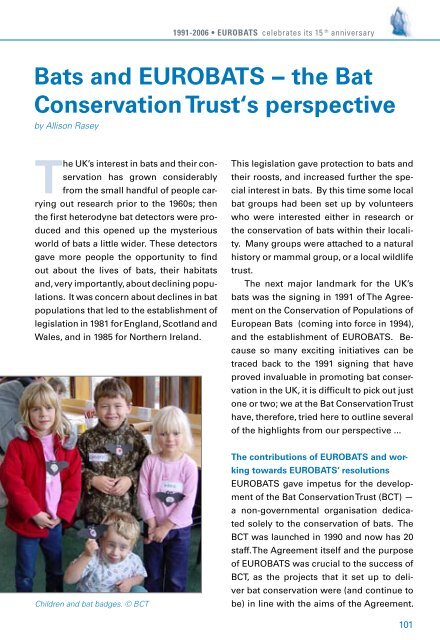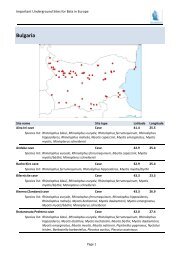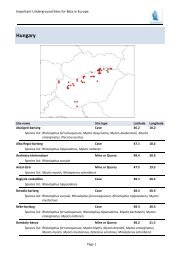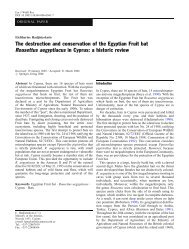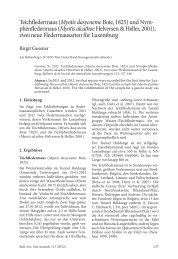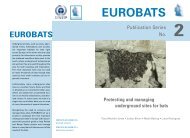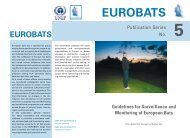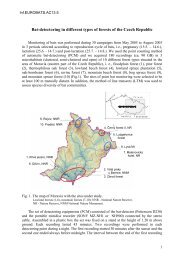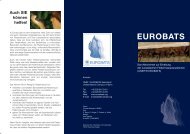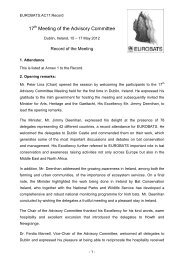1991 - 2006. EUROBATS celebrates its 15th anniversary
1991 - 2006. EUROBATS celebrates its 15th anniversary
1991 - 2006. EUROBATS celebrates its 15th anniversary
You also want an ePaper? Increase the reach of your titles
YUMPU automatically turns print PDFs into web optimized ePapers that Google loves.
<strong>1991</strong>-2006 • <strong>EUROBATS</strong> <strong>celebrates</strong> <strong>its</strong> 15 th <strong>anniversary</strong><br />
Bats and <strong>EUROBATS</strong> − the Bat<br />
Conservation Trust‘s perspective<br />
by Allison Rasey<br />
The UK’s interest in bats and their con-<br />
servation has grown considerably<br />
from the small handful of people car-<br />
rying out research prior to the 1960s; then<br />
the first heterodyne bat detectors were pro-<br />
duced and this opened up the mysterious<br />
world of bats a little wider. These detectors<br />
gave more people the opportunity to find<br />
out about the lives of bats, their habitats<br />
and, very importantly, about declining populations.<br />
It was concern about declines in bat<br />
populations that led to the establishment of<br />
legislation in 1981 for England, Scotland and<br />
Wales, and in 198 for Northern Ireland.<br />
Children and bat badges. © BCT<br />
This legislation gave protection to bats and<br />
their roosts, and increased further the special<br />
interest in bats. By this time some local<br />
bat groups had been set up by volunteers<br />
who were interested either in research or<br />
the conservation of bats within their locality.<br />
Many groups were attached to a natural<br />
history or mammal group, or a local wildlife<br />
trust.<br />
The next major landmark for the UK’s<br />
bats was the signing in <strong>1991</strong> of The Agreement<br />
on the Conservation of Populations of<br />
European Bats (coming into force in 1994),<br />
and the establishment of <strong>EUROBATS</strong>. Because<br />
so many exciting initiatives can be<br />
traced back to the <strong>1991</strong> signing that have<br />
proved invaluable in promoting bat conservation<br />
in the UK, it is difficult to pick out just<br />
one or two; we at the Bat Conservation Trust<br />
have, therefore, tried here to outline several<br />
of the highlights from our perspective ...<br />
The contributions of <strong>EUROBATS</strong> and working<br />
towards <strong>EUROBATS</strong>‘ resolutions<br />
<strong>EUROBATS</strong> gave impetus for the development<br />
of the Bat Conservation Trust (BCT) —<br />
a non-governmental organisation dedicated<br />
solely to the conservation of bats. The<br />
BCT was launched in 1990 and now has 20<br />
staff. The Agreement <strong>its</strong>elf and the purpose<br />
of <strong>EUROBATS</strong> was crucial to the success of<br />
BCT, as the projects that it set up to deliver<br />
bat conservation were (and continue to<br />
be) in line with the aims of the Agreement.<br />
101


